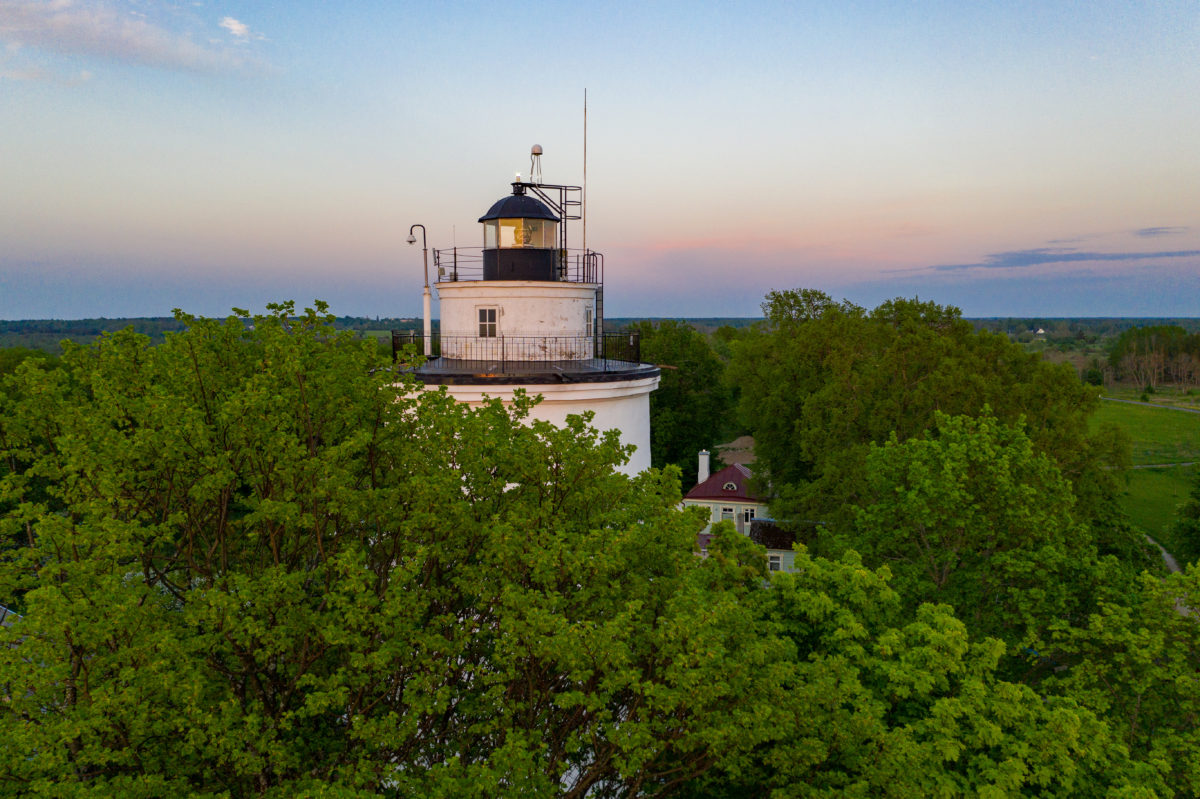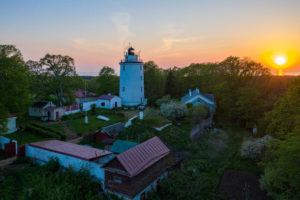There was no established system in 18th century Russia for organising the service of lighthouses nor the construction of new lighthouses. This depended only on the interests and moods of the changing emperors. In the first half of the 18th century, state-owned lighthouses had temporary crews that were assembled from members of the navy, as needed.
The primary task of the crew was to light an open fire at the top of the lighthouse at sunset and to keep it lit until dawn. Fuel was delivered at the expense of the government, while the help of manors and peasants was also sometimes used in forested areas. Wood and coal was carried up the lighthouse or hoisted up to the platform with a pulley and burnt in a metal basket. Back then, the crew of the rear beacon of Suurupi lighthouse comprised a skipper, a boatswain and five seamen.
In 1805, the Admiralty Board was replaced by the Admiralty Department. Along with it, the post of Director of Baltic Lighthouses was created. By 1807, the lighthouses had gone under the command of the Ministry of the Navy. In the same year, the lighthouses switched from burning wood and pit coal to burning oil. The sizes and maintenance costs of crews were also determined. A supervisor, five servants and a runner took up posts in the rear beacon of Suurupi.
In 1827, the Office of the Hydrographer General was created under the Ministry of the Navy to replace the Admiralty Department. Its task was to organise the pilot service and carry out hydrographic expeditions, to secure fairways with seamarks, to create sea maps, as well as to equip the fleet with navigational instruments.
In 1843, the lighthouses on the southern coast of the Gulf of Finland went under the command of the Hydrography Department’s Directorate of Baltic Lighthouses, which had its office in Tallinn. The lighthouses were under the command of the Finnish pilot and lighthouse authority.
In 1870, the crews of all Russian lighthouses were replaced by salaried workers and a new service manual was created.
In 1885, the Main Hydrographic Office was created under the Ministry of the Navy along with the Directorate of the Lighthouses and Pilots of the Baltic Sea, which operated until World War I.
A usual lighthouse crew in 1906 comprised of a supervisor and four to six lighthouse servants. The supervisor served under the Directorate of Lighthouses. They would have had training from a nautical school or a course for supervisors.In 1918, the Maritime Safety and Navigational Auxiliary Service Office began operating. In 1920, the General Authority of Maritime Issues was created. It was renamed the Waterways Authority in 1929, and the Waterways Department in 1938.
In 1921, the workers at Suurupi included a supervisor and three servants at the rear beacon, three servants at the front beacon, and two machinists at the Ninamaa fog siren station. The supervisor was also in charge of the front beacon and the Ninamaa fog siren station.
After the occupation of the Republic of Estonia in 1940, the lighthouses were handed over to the hydrography service of the Soviet Navy and the crews of many lighthouses were replaced.
Villiam Kimberg (1903-1976), motorist
1918–1931 Mihkel (Mihkail) Grigoryev, supervisor at the Suurupi lighthouse
In the 1950s, altogether nearly ten people worked in the two beacons of Suurupi. The family of Elmar Kares first lived in the building of the front beacon until the rear beacon and its residential building were restored in 1951 from damage sustained during the war.
The work at the lighthouses and the fog siren station included monitoring the working order of the light devices, the fog siren and other equipment, communicating with the hub and warships at sea, and maintaining the buildings and the surroundings. During Soviet times, there was round-the-clock watch duty in the guard room of the upper beacon’s technical building. A high-ranking committee from the navy’s hydrography service came to inspect the lighthouse complex every autumn. Elmar Kares, who had previously worked at the Tallinn power station, made multiple improvements to the lighthouse’s light and control systems, which were praised by the management.
1950 – 1978 ülem Elmar Kares, tehnik Indy Kares
1953–1964 Voldemar Kares
1978–1998 warden Peet Pajus, assistant warden Helle Kares
1998–2002 warden Helle Kares
In 1990, the Maritime Administration was created. The development of new navigational markings enabled the step-by-step automation of the management, control and supervision of the operations of lighthouses. By 2004, most lighthouse keepers had retired or had been made redundant. By 2010, there were no lighthouse keepers left.
The lighthouse keeper’s profession has been consigned to history…
 Suurupi.Travel
Suurupi.Travel 
